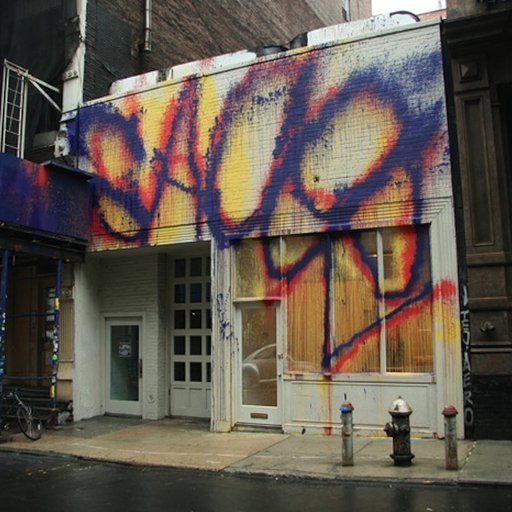Lee Bontecou
Lee Bontecou is a sculptor and printmaker best known for her iron-framed, three-dimensional “worldscapes” inspired by a desire to translate the depth of the painted surface. Her mother’s work in a submarine wiring factory and the disturbing events of World War II influenced her consciousness, which she channeled into her mixed-media works that integrated metal scraps, appliances, or tools. In the 1950s she studied in Italy and discovered soot after short-circuiting a handheld torch—as a medium, it facilitated a depth in her drawings that she channeled into sculptural wall-works when she returned to New York in 1958. She took sculpture off the ground, welding an iron frame herself to contain canvases darkened with soot, supported by wire and built outward from the frame. Bontecou’s practice morphed in the 1970s to include other materials including vacuum-formed plastic, porcelain figures, and welded sculpture. Drawings served as a vital experimental mode for her, and she has illustrated her structures throughout the course of her career. Her works embody the irrational duality of humans—skin, bones, and orifices are a rigid frame for both beauty and decay.
The Museum of Modern Art, New York, Museum of Contemporary Art, Chicago, and Hammer Museum, Los Angeles, have …
Lee Bontecou is a sculptor and printmaker best known for her iron-framed, three-dimensional “worldscapes” inspired by a desire to translate the depth of the painted surface. Her mother’s work in a submarine wiring factory and the disturbing events of World War II influenced her consciousness, which she channeled into her mixed-media works that integrated metal scraps, appliances, or tools. In the 1950s she studied in Italy and discovered soot after short-circuiting a handheld torch—as a medium, it facilitated a depth in her drawings that she channeled into sculptural wall-works when she returned to New York in 1958. She took sculpture off the ground, welding an iron frame herself to contain canvases darkened with soot, supported by wire and built outward from the frame. Bontecou’s practice morphed in the 1970s to include other materials including vacuum-formed plastic, porcelain figures, and welded sculpture. Drawings served as a vital experimental mode for her, and she has illustrated her structures throughout the course of her career. Her works embody the irrational duality of humans—skin, bones, and orifices are a rigid frame for both beauty and decay.
The Museum of Modern Art, New York, Museum of Contemporary Art, Chicago, and Hammer Museum, Los Angeles, have all hosted retrospectives of her career. Bontecou exhibited extensively throughout the 1960s, and since then has been shown at ZKM | Museum of Contemporary Art, Karlsruhe, Germany, National Gallery of Art, Washington, D.C., St. Louis Art Museum, Missouri, Whitney Museum of American Art, New York, Albright-Knox Art Gallery, Buffalo, New York, and the Neuberger Museum of Art, Purchase, New York, among many others. The artist participated in the São Paulo Bienal in 1961, the Seattle World’s Fair in 1962, and had a solo exhibition at the 54th Carnegie International in 2004. Philip Johnson himself commissioned Bontecou to create a sculpture for Lincoln Center, which still resides in the David H. Kock Theater. She was one of two women, with Louise Bourgeois, chosen to represent North America at dOCUMENTA 3 in 1964, Kassel. The artist has received a number of awards, most prominently two Fulbright scholarships (1956 and 1958), the Louise Comfort Tiffany Award in 1959, first prize by the National Institute for Arts and Letters in 1966, and the Skowhegan Medal for Sculpture in 2007, among others.
Baltimore Museum of Art, Baltimore, MD
Carnegie Museum of Art, Pittsburgh, PA
Cleveland Museum of Art, Cleveland, OH
Corcoran Gallery of Art, Washington, D.C.
Dallas Museum of Art, Dallas, TX
Fine Arts Museums of San Francisco, CA
Solomon R. Guggenheim Museum, New York, NY
Hammer Museum, Los Angeles, CA
Hirshhorn Museum and Sculpture Garden, Smithsonian Institution, Washington, D.C.
Los Angeles County Museum of Art, Los Angeles, CA
The Museum of Contemporary Art, Chicago, IL
Museum of Contemporary Art, Los Angeles, CA
The Museum of Fine Arts, Houston, TX
The Museum of Modern Art, New York, NY
National Gallery of Art, Washington, D.C.
San Francisco Museum of Modern Art, San Francisco, CA
The Tate, London, England
Michael Rosenfeld Gallery, New York






